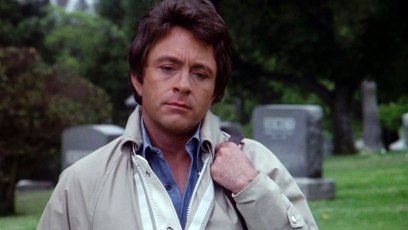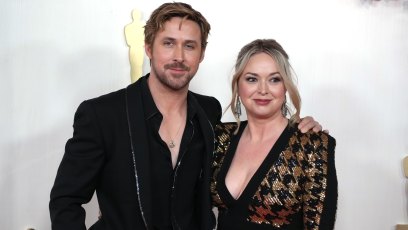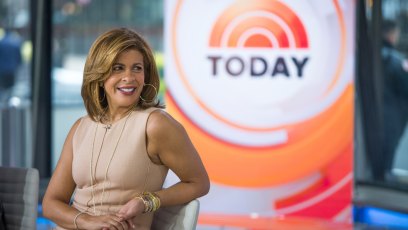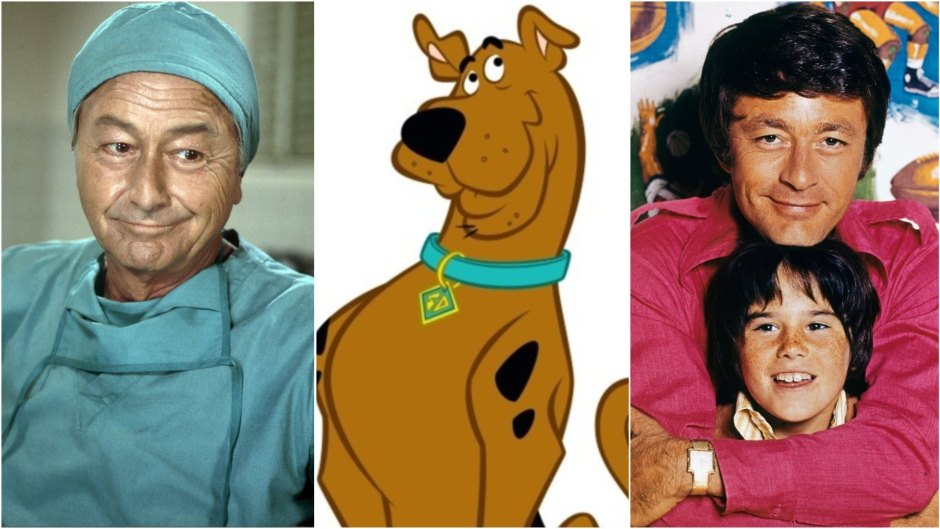
Classic TV In 1969: A Look Back At The Shows Celebrating 50th Anniversaries This Year!
Now that we’ve reached 2019, we realize that there’s a lot of pop culture celebrating to be had. We kicked things off with a 50th Anniversary look back at the films of 1969 — which brought us everything from Paul Newman and Robert Redford in Butch Cassidy and the Sundance Kid to John Wayne in True Grit, Clint Eastwood singing his way (barely) through Paint Your Wagon, and George Lazenby making his only appearance as James Bond in On Her Majesty’s Secret Service.
From there, we turned to the films of 1979 celebrating 40 years, including Dustin Hoffman and Meryl Streep in Kramer vs. Kramer, Sigourney Weaver in Alien, Marlon Brando in Apocalypse Now, Jane Fonda and Michael Douglas in The China Syndrome, and, coincidentally, the return of James Bond, with Roger Moore playing 007 for the fourth time in Moonraker. Well, now it’s time to turn our attention to the small screen, where there’s plenty of anniversaries going on as well.
This installment of the series focuses on television shows that made their debut 50 years ago, some you’ve never heard of, others you undoubtedly wish you hadn’t, and others that are somehow still going strong today in one form or another.
Scroll down to see 1969 classic TV shows turning 50 in 2019!
1 of 20

ABC Photo Archives/ABC via Getty Images
‘ABC Movie of the Week’ (1969-75)
This anthology of films was created in response to the high cost of acquiring theatrical movies for broadcast. The thinking was that the networks — beginning with ABC, who had the idea — could create their own movies, and to a large degree, it worked. Things kicked off on Sept. 23, 1969, with Seven in Darkness, about seven blind survivors from a plane crash who have to somehow make it out of the wilderness. A total of 253 movies would air, many of them serving as pilots for TV shows.
2 of 20

Getty Images
‘The Bill Cosby Show’ (1969-71)
Before he was Dr. Huxtable and had his life go down the crapper, and after I, Spy, Bill Cosby was high school gym teacher Chet Kincaid, described by Wikipedia as being “a bachelor, an average cool guy trying to earn a living and help people out along the way.” A total of 52 episodes were produced during the show’s two seasons.
3 of 20

Getty Images
‘The Brady Bunch’ (1969-74)
A lovely lady, three lovely girls, a man named Brady, three boys of his own. They come together and form a bunch. The Brady Bunch. Yadda, yadda, yadda. Like these other shows, The Brady Bunch is celebrating its 50th anniversary, but it’s still very much a part of the public consciousness with more spin-offs than anything else we can think of, except maybe Star Trek. Viva La Brady!
4 of 20

ABC Photo Archives/ABC via Getty Images
‘The Courtship of Eddie’s Father’ (1969-72)
Based on the 1963 film of the same name, it’s about magazine publisher and widower Tom Corbett (Bill Bixby), who is trying to raise his son, Eddie (Brandon Cruz) alone, aided by his housekeeper, Mrs. Livingston (Miyoshi Umeki). Definitely a dramedy that soared in its first two seasons thanks to the connection between Bixby and Cruz, though it derailed in the third when producer James Komack started guiding more and more stories towards his character, photographer Norman Tinker.
5 of 20

(NBC/NBC NewsWire/Getty Images
‘The Debbie Reynolds Show’ (1969)
Describes IMDb: “Debbie Thompson [Debbie Reynolds] was an ordinary housewife who wanted desperately to become a newspaper reporter. Her husband Jim was a well-known sportswriter for the Los Angeles Sun, and Debbie’s schemes and plans to build her own career constantly put him on the spot.” If you think that it kind of sounds like I Love Lucy, that might have something to do with the fact that Jess Oppenheimer, one of the writers of the earlier show, was the producer here. Twenty-six episodes in all were produced.
6 of 20

Michael Ochs Archive/Getty Images
‘The Glen Campbell Goodtime Hour’ (1969-72)
Back in the ’60s, the networks would often run “summer replacement series” rather than airing reruns of shows from the previous season. When The Smothers Brothers Comedy Hour went on hiatus, it was replaced by a Glen Campbell series. This led the network to give him his own music and comedy variety show. It ran a total of four seasons with 91 episodes produced and featured a wide array of guests (including Tom Jones, pictured with Glen above).
7 of 20

CBS Television Distribution
‘H.R. Pufnstuf’ (1969)
Our Saturday morning TV throwback: Jack Wild (who played the Artful Dodger in the 1968 film Oliver!), is Jimmy, a boy with a magic flute who finds himself on the mysterious Living Island, where pretty much everything is alive. There, he encounters a variety of weird characters (either actors in bulky costumes or puppets being manipulated off-camera) and is befriended by the (sort of) dragon-in-charge, H.R. Pufnstuf (and it isn’t hard to believe that everybody involved was — think about it). Together they ward off the evil Witchiepoo (Billie Hayes), who is determined to get her hands on that flute. Although only one season of 17 episodes was produced, the show remained on the air for a number of years and even inspired a 1970 film version.
8 of 20

Michael Ochs Archives/Getty Images
‘Hee Haw’ (1969-93)
A mix of country music and comedy, Hee Haw originally ran on CBS from 1969 to 1971, but then it went into syndication — meaning that it was run on local stations across the country rather than on one of the networks — from 1971 to 1993. It was hosted by Roy Clark and Buck Owen. Enormously popular, it’s something that Roy in particular remained proud of until the day he died.
“I’ve told everyone that I grew old on Hee Haw, but I could’ve grown old without it,” he related to NPR, offering this explanation for the show’s popularity: “I think basically, we didn’t hurt anyone. We were out there having a good time. You can go and get educated, but you can come to Hee Haw and get another education. The critics all said that the only listeners that we had were country, and I said, ‘Wait a minute — I was just in New York City, and I was walking down the street and the guy yells across and says, ‘Hey, Roy, I’m a-picking.’ Well, I’m obligated to say, ‘Well, I’m a-grinning.’”
9 of 20

Silver Screen Collection/Getty Images
‘The Jim Nabors Hour’ (1969-71)
As was the norm at the time, this was yet another music comedy variety show, only with Jim Nabors at the center of it. What never failed to amaze was that the guy from The Andy Griffith Show and Gomer Pyle, U.S.M.C., who really did sound the way he spoke as Gomer, would have this amazing baritone voice. It just didn’t make sense, but it also never failed to entertain the audience.
10 of 20

ABC Photo Archives/ABC via Getty Images
‘The Johnny Cash Show’ (1969-71)
This was a music variety show featuring Johnny, his wife June Carter Cash, the Carter family, the Statler Brothers, Carl Perkins, and the Tennessee Three as regular performers, with a wide variety of folk-country musician guests (Joni Mitchell, Linda Ronstadt, and Bob Dylan among them). Fifty-eight episodes in all were produced.
11 of 20

CBS Television Distribution
‘Love, American Style’ (1969-74)
Think of this anthology series as an early version of The Love Boat or Fantasy Island, only it was made up of short vignettes all focused on the subject of love and romance with a wide variety of guest stars. It was a part of truly great line-up on ABC Friday nights that saw it preceded by The Brady Bunch, The Partridge Family, Room 222, and The Odd Couple. They don’t make line-ups like that anymore.
12 of 20

ABC Photo Archives/ABC via Getty Images
‘Marcus Welby, M.D.’ (1969-76)
Robert Young, who had played insurance salesman Jim Anderson on the Classic TV sitcom Father Knows Best, returned to television in the role of the title character. He and his assistant, Steven Kiley (James Brolin in the days before he met Barbra), do their best to treat people as people at a time when things were shifted to more specialized medicine with doctors who didn’t care as deeply. One of the highlights back then was when this show would have cross-overs with Arthur Hill’s Owen Marshall, Counselor at Law (gotta love them crossovers!), which they seemed to do quite a bit.
13 of 20

Michael Ochs Archives/Getty Images
‘Medical Center’ (1969-76)
Set in a Los Angeles university hospital, the focus is on Doctors Paul Lochner and Joe Gannon (James Daly and Chad Everett, respectively), and the drama would come from exploring their personal lives as well as the lives of the patients that they came into contact with. In all, 171 episodes were produced.
14 of 20

NBCUniversal
‘My World and Welcome to It’ (1969-70)
Based on James Thurber’s cartoons for The New Yorker, this critically acclaimed, but low-rated, show cast William Windom as John Monroe (a thinly-disguised version of Thurber), who uses his comics as a means of making social commentary. The show would feature animation where people or animals from his comics panels would come to life and interact with him. Despite the fact the show won an Emmy for Outstanding Comedy Series and for Windom’s acting, it was cancelled by NBC 26 episodes in.
15 of 20

Central Press/Getty Images
‘Playboy After Dark’ (1969-70)
It was the end of the Swingin’ ’60s, so why shouldn’t Hugh Hefner, the founder of Playboy, have his own late night show? Each episode would feature what was described as a “typical” party at Hef’s place (though clothes remained decidedly in place), where there would be conversations and music performances from many of the big stars of the day, including Joe Cocker, Ike & Tina Turner, Jerry Lewis, the Grateful Dead, Three Dog Night, and Sammy Davis, Jr. Fifty-two episodes were produced.
16 of 20
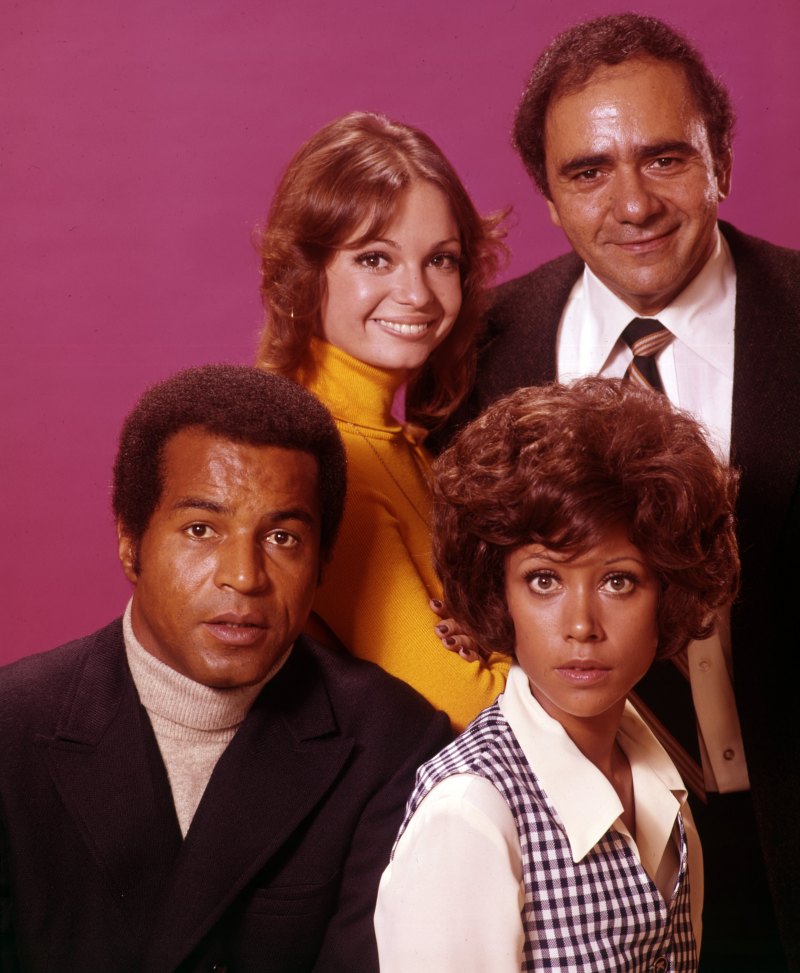
ABC Photo Archives/ABC via Getty Images
‘Room 222’ (1969-74)
One of TV’s first dramedies, the setting was Walt Whitman High School — a racially diverse school — and the focus on the classroom of Pete Dixon (Lloyd Haynes), an African-American history teacher who connects with his students in a way that most other teachers don’t. In addition to the classroom, the show would also look at the home lives of both students and faculty. There were also timeless plots regarding kids maturing into adults, and issues of the day were addressed by the writers, ranging from the Vietnam War to women’s rights and even the Watergate scandal.
Other cast members include Denise Nicholas as Liz McIntyre, guidance counselor and Pete’s girlfriend; Michael Constantine as principal Seymour Kaufman, and Karen Valentine as student teacher (eventually hired as a teacher) Alice Johnson.
17 of 20
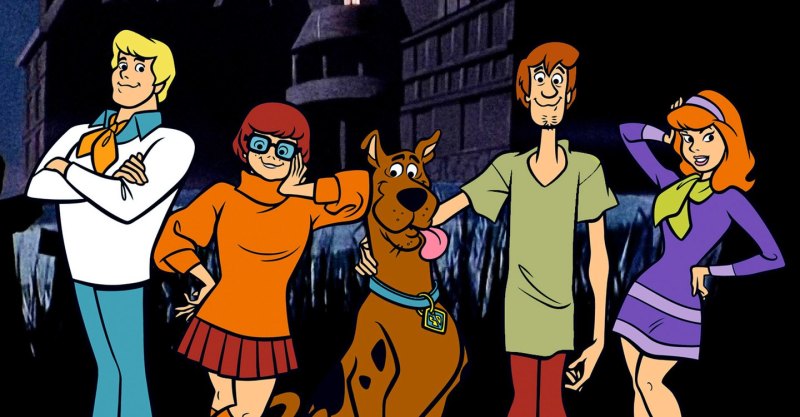
Warner Bros
‘Scooby-Doo, Where Are You!’ (1969-70)
A dog with a speech impediment following four teenagers who solve seemingly supernatural mysteries does not sound like the sort of thing that would make for a television classic. But can you argue against the merits of that concept when its name is Scooby-Doo — especially if it’s been around for half a century? Nope, neither can we.
The show’s popularity has given birth to nine spin-off series and more animated and live action movies than you can throw a Scooby-Snack at!
18 of 20

Hulton Archive/Getty Images
‘Sesame Street’ (1969-)
We all know Sesame Street and the way that it combines gentle entertainment with educational and life lessons. Created 50 years ago by Joan Ganz Cooney and Lloyd Morrisett, the show also gave us children’s heroes Big Bird, Oscar the Grouch, Cookie Monster, Ernie and Bert, Grover, and so many more. What an incredible achievement!
19 of 20

MGM Television
‘Then Came Bronson’ (1969-70)
Again, we’re in that period of the late 1960s where so many people were trying to discover who they really were, and who the people that shared this world with them were as well. On the big screen we had Easy Rider, on the small it was Then Came Bronson.
Michael Parks is reporter James “Jim” Bronson, who, having become disillusioned, quits his job, climbs on to his motorcycle and begins exploring the country, meeting various people. Some of them he simply lends a helping hand to, others he manages to educate to turn their lives around.
20 of 20

Screen Magic, Inc.
‘Winky Dink and You’ (1969-73)
The only reason this show is included is because anyone who used to watch it can identify with the problems that it caused. Described as the first interactive TV show, it had the title character and his dog out on adventures, but every time they ran into trouble, they’d turn to the viewer and ask for help. In response, the kids would theoretically draw them a bridge to cross over a river, put a new tire on their bike… whatever it may be. To enable them to do this, the producers came up with a “Magic TV Kit” parents could purchase, which would be placed on top of the TV screen for the kids to draw on, and then be easily cleaned off.
Sounds fab, right? But think of how many kids didn’t wait for the kit and just drew on the TV anyway! If we had a time-traveling DeLorean, we’d go back to the past, and peer in the windows just to watch their parents freak out. What else would you do with a time-traveling DeLorean anyway?
Yeah, 1969. What a year!





